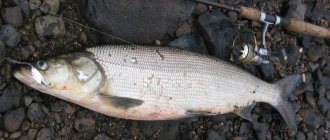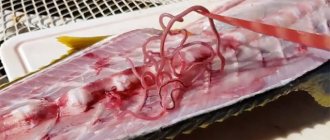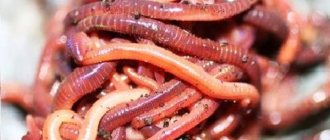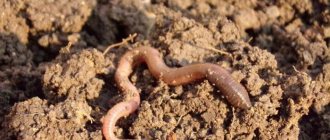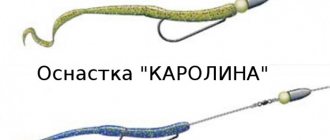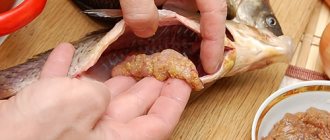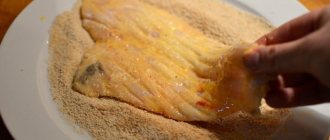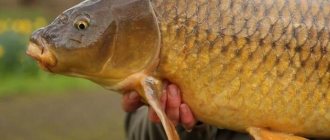Every experienced fisherman knows that one of the most desirable delicacies for fish are mealworms. If you place such bait on a hook, your fishing will become incredibly productive and eventful. It’s not difficult to get worms for your upcoming fishing trip. In addition, they can be bred independently at home, which does not require much effort or expense.
One of the most desirable delicacies for fish are mealworms.
general information
Since ancient times, people have bred worms for a variety of purposes. In addition to fishing, they can be used as chicken feed. Such creatures contain a lot of protein and other nutrients necessary for the full development of poultry. In this regard, some poultry farmers are interested in the intricacies of breeding these arthropods at home.
However, not everyone agrees to such an “adventure”, because few people are ready to look at a bunch of fast, wriggling animals, much less engage in their breeding. In turn, daredevils who are not afraid of such a spectacle successfully keep worms in a small box and then use them for economic purposes.
The biological description of representatives of the species mentions that they are mealworm larvae with small sizes and a specific lifestyle. The creature was first discovered in the Mediterranean, from where it was brought to the European continent. The beetle itself has a body length of 1-1.5 centimeters, and the size of the larvae is 3 cm. When choosing a source of food, animals do not show any special requirements, but based on the name, you can guess about their love for cereals and flour products.
The life cycle of worms consists of several stages:
- Laying eggs. The duration of the incubation period is 8−30 days.
- Stage of larval formation (this is the stage that interests farmers and poultry farmers). The stage takes about two to three months.
- Transformation of mealworms into pupae. The process is carried out within 8−18 days.
- Formation of a full-fledged beetle. The lifespan of this form reaches 1−4 months.
When breeding mealworms you need to be patient and attentive. It is important to provide animals as poultry feed in a timely manner, and also to leave a few individuals for further reproduction. In this case, the development of the colony will be productive.
What kind of “beast” is this?
These insects can hardly be called inhabitants of a particular continent. They are distributed all over the world by food traders. Therefore, the Khrushchaks can safely be given the status of cosmopolitans. And where do the “babies” of these beetles grow and develop? The fact that they are known as "flouries" is already a good clue. Females choose mills, bakeries, and warehouses with flour products as an “incubator” for white eggs. You can also find larvae under feeders or nests in chicken coops and dovecotes. Drupes are in the development stage for a whole year.
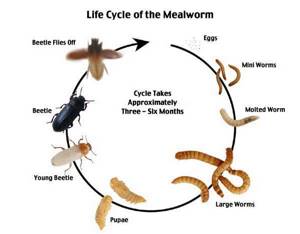
During this time, they molt four times, happily feasting on bran, bread, grains and flour. The “children” of Khrushchak do not disdain animal food. These are the dried corpses of birds and mice, the remains of feathers that are found at bird nesting sites. Subsequently, the larvae pupate without a cocoon, and in July-August they turn into one and a half centimeter brown, slightly shiny flat barbels.
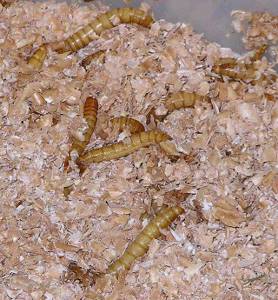
For various reasons, it is the mealworm that attracts the greatest interest among people. His appearance is unlikely to seem attractive to ordinary people. However, entomologists describe them with great sympathy. Length is 2.5-3 centimeters, some reach four. The color of the cylindrical body is brownish-yellow. There are no eyes, but bonefishes have three pairs of thoracic legs with claws. The body of the larvae ends with two hooks that look upward, and at the bottom there are two small warts. This is a kind of pushing mechanism for movement. Interesting fact: the mealworm was already known in the first century BC. Pompey's associate, encyclopedist, tribune, writer and poet Marcus Terentius Varro mentioned him as Tenebrion in his work De re rustica - “On Agriculture”. He shared his first knowledge of what mealworms are.
Preparing equipment for mealworms
Breeding mealworms at home is a rather painstaking and lengthy process. To successfully set up a worm farm, you need to purchase special boxes with smooth walls in advance. Regular glass or plastic containers are suitable for this purpose, from which worms and beetles cannot escape. Some farmers use aquariums with a capacity of 10 gallons (that is, about 37.8-45.4 liters), as well as all kinds of plastic containers.
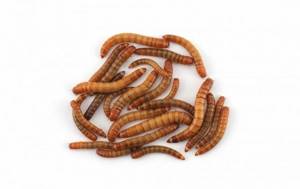
Breeding mealworms at home is a rather painstaking and lengthy process.
The lids of such containers must have holes for adequate air exchange. They are easy to make using a heated awl. In addition, you can cover the box with wire mesh, which will also provide good ventilation. The main thing is that fresh air gets into the boxes, but the arthropods themselves cannot be free.
The number of containers for setting up a worm farm depends on the size of the future colony. If you want to breed a large number of worms, it is better to purchase two or three of these boxes, because as they develop, you will have to separate the mature larvae from the beetles.
As for wooden boxes, they are not suitable for keeping flour beetles. Breeding at home is best done in plastic or glass containers, since an adult animal can easily gnaw holes in a wooden structure and get out.
Worm dish recipe
Agronutris won't be the first to produce insect products. This is also done by Jiminis, which even presented a recipe for mealworm muffins. You will need:
- 3 spoons of cocoa;
- 60 grams of margarine;
- 1 egg;
- a tablespoon of low-fat yogurt;
- 30 grams of flour;
- baking powder;
- 25 grams of mealworm powder.
Cocoa, melted butter, egg, yogurt and a small amount of baking powder should be mixed with water until a thick mass is obtained. You need to add mealworms to the resulting mixture. Fill the muffin tins with this mixture and place them in the oven for 20 minutes. The tops of the cupcakes can then be brushed with powdered sugar and decorated with crunchy worms.
Do you know why, as people get older, they start liking olives and other strange-tasting foods?
Substrate selection
At the next stage, it is necessary to prepare a suitable substrate for keeping mealy beetles. As you know, the bulk of its diet consists of grains and cereals. They are used as a substrate in which animals will live and develop. Ready-made soil is sold in specialized stores, but many farmers prefer homemade compositions, mixing bran, cereals and other grains together.
The resulting consistency is further crushed until it reaches the state of a fine powder. In this form, the mixture is much easier to process, selecting worms and beetles for further transfer to a new container.
Farmers often add bone meal, ground cricket shells and a number of other components of animal origin to the soil. Their presence will have a beneficial effect on the nutritional value of farmed worms.
After successfully preparing the substrate, you can move on to the next stage - purchasing mealworms. Breeding at home gives good results only if the basic rules of the upcoming action are observed. Before you buy your first colony, you need to figure out the optimal number of individuals. It is determined by the number of poultry heads that need to be fed .
- For the first arrangement of a farm, a colony of 5 thousand beetleworms is quite suitable. Under favorable conditions, within a few months the colony will double in size.
- If there is no desire to breed a large number of arthropods, and the time to maintain them is not limited to several months, then you can purchase 150 individuals of the beetle.
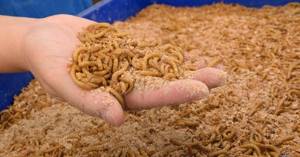
Breeding at home gives good results only if the basic rules of the upcoming action are observed.
Insecticides for mealy beetle
The use of insecticidal preparations in the habitats of the pest, the beetleworm, may be associated with a problem associated with the danger of chemicals getting into food products. In nature, the natural habitat of this agricultural pest, it is controlled using the following types of insecticides:
- fumigation preparations based on phosphine - hydrogen phosphorous;
- contact agents used to spray grain - solutions are produced in the form of concentrated emulsions;
- means for aeration using fog generators;
- insectoacaricides based on pirimophos, bifenthrin and other pyrethoid drugs.
Chemical insecticides for home use are also based on substances of the pyrethoid group. Organophosphorus compounds are not used here due to their high toxicity. Preparations for home use are mainly used in the form of gels or aerosols for topical spraying.
Review: We live in a private house, we store supplies in a separate closet, until recently there were no problems. We went on vacation and the house was left without heating for a month. We arrived, began to sort out the supplies and discovered that mealworms were infested in the flour and cereals stored in the bags. A disgusting sight. We threw everything out, it didn’t help. New supplies became infected. After calling the exterminators, the worms disappeared.
Favorable environment
Unlike many other arthropod species, mealworms are demanding creatures that require proper care and attention. In order for their maintenance to be worth the time, effort and money spent, it is important to take care of creating a favorable environment.
Experts say that for the colony to fully reproduce, it is necessary to ensure a temperature regime within the range of 21-24 degrees Celsius. Therefore, you should find the heated area in the house where you can maintain the optimal temperature. The site for the farm should not be polluted or treated with chemicals. Otherwise, the future colony will simply die. When choosing an area for breeding worms, it is customary to be guided by the following recommendations:
- The most favorable environment for flour beetles is considered to be a garage with a full heating system.
- To ensure a stable temperature regime, you can use a heater, which is sold in specialized hardware stores.
- If the temperature of the ground and environment is too low, the worms will not begin laying eggs and will refuse to produce offspring.
Temperature
The temperature regime at which the larvae feel excellent ranges from 21 to 24 degrees Celsius . The location of the farm should be warm and dark. Make sure that the surrounding atmosphere does not contain any harmful chemicals that can easily kill the colony.
Cold inhibits all life processes of mealworms. If you want to keep a certain number of larvae to feed, simply place them in the refrigerator. They will remain unchanged for a long time.

Subtleties of reproduction
After completing the above steps, all that remains is to wait until the flour beetle begins to reproduce. The larvae of the darkling beetle begin to reproduce their own kind only after 10 weeks from the moment of birth. At the beginning of the reproductive process, the larvae develop into pupae and then become mature beetles. The latter begin to mate and lay eggs in the soil. The eggs will hatch into larvae within 1-4 weeks. During this period, the farmer needs to perform several simple steps:
- Regularly replace chopped vegetables with fresh ones. It is better to remove moldy food, otherwise it will lead to the development of putrefactive processes.
- Dead larvae and beetles are removed from the container.
As soon as the first colony of larvae hatch from the eggs, they need to be moved to another place, for example, a wooden box. If they remain in the same container with beetles, the latter will simply eat them. But once placed in a new box, they will continue to mate and lay eggs. When moving beetles and pupae, follow these guidelines:
- In another pot you need to place 5-8 centimeters of fresh substrate.
- Wearing gloves, you need to remove beetles and pupae from the first container. As you know, beetles are completely safe; they never bite their hosts and rarely attempt flight.
- In the second box you need to put carrots or potatoes, cut into small particles. Then the pot needs to be covered with a lid.
Once the newly formed larvae have grown to an impressive size, but have not turned into pupae, they can be fed to poultry as food. The main thing is not to forget that in a short time mealworms move to the stage of pupae, and then to beetles. If you need to preserve pet food for a long time, it is better to place mealworms in the refrigerator. In this case, they will remain fresh for a long period of time.
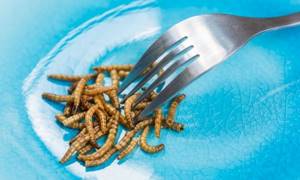
The larvae of the darkling beetle begin to reproduce their own kind only after 10 weeks from the moment of birth.
Storing worms in an apartment
Living in an apartment building dictates its own conditions when storing worms. Often, due to the inadmissibility of excess moisture, plastic or enamel containers are chosen as containers for storing worms for fishing at home. A box, bucket or pan is filled with soil, peat, it is permissible to add rotten leaves and hay. Bait is placed in this substrate. Under these conditions, it is also necessary to moisten and feed the population in the same ways as in the case of storage in wooden boxes. It must be remembered that the container cannot be tightly closed, otherwise the worms will die. However, if you don’t close the box completely, they can spread around the apartment. The optimal cover would be gauze or other breathable fabric.
Plastic containers are preferable for indoor storage because they do not allow moisture to pass through and do not absorb odors. The storage location must be cool, otherwise the worms may die. to store worms for a long time in the refrigerator. However, not everyone has the opportunity to store worms there, so you can find another cool place like a dark corner of the pantry. In cool weather and at night, the best option is to store worms on the balcony.
Some fishermen adapt old aquariums for storing worms, filling them with soil and peat. In a spacious container, the worms feel much better, and accordingly, they remain alive much longer.
Another storage option is a canvas bag filled with damp soil. The worms are placed in it after digging directly with the soil, after which it is placed on the bottom shelf of the refrigerator, checking and moistening from time to time.
Important points
When breeding worms at home, it is important to regularly sift the substrate and maintain the process. As the larvae develop, the nutrient content in the soil decreases significantly. Therefore, once the young worms have changed from one form to another, you need to remove the remaining unformed worms and then place them in a third container. In turn, the first box should be thoroughly disinfected and several inches of substrate should be placed in it. Only after this can the worms be returned.
In order for the worms to grow as quickly as possible, it is important to provide them with plenty of light. Keeping animals in the dark is strictly prohibited. Otherwise, they will stop developing or die.
Experienced farmers recommend using large cages, because the larger their surface area, the more comfortable the larvae will feel. Containers are cleaned of waste and remaining food as often as possible. The burlap should have long slits that will ensure adequate air ventilation.
Also, sometimes it is necessary to separate some individuals from others so that they pupate faster. Only after this the pupae are returned to the others.
To set up a worm farm use:
- Large boxes or containers made of metal, plastic, glass. Their depth should be at least 20-25 centimeters. Moreover, the wider the container, the better.
- Burlap (sizes reach several square meters).
- About a hundred mealworms to start breeding.
- Worm food, which includes fruits, vegetables and oatmeal.
- Paper towels.
- Gauze.
- Sand.
Place bran and a source of moisture at the bottom of the container. As a container, you can use a cardboard egg box, which is pre-moistened with water. Inside the tray, comfortable humidity should be maintained within 60-70 percent, as well as a temperature range of 26-28 degrees Celsius. The required humidity is achieved by spraying with a spray bottle.

For mealworms, comfortable humidity should be maintained within 60-70 percent, as well as a temperature of 26-28 degrees Celsius.
Danger to humans
Mealworms also pose a certain danger to human health.
Chitin scales, larval excrement, and uric acid found in cereals and flour can cause severe allergies and food poisoning , which can be complicated by intoxication of the body.
A serious danger lies in the fact that the larval forms and mature individuals of flour beetles are intermediate hosts of the rat tapeworm (Hymenolepis diminuta), which causes a helminthic disease in humans - hymenolepiasis .
You should get rid of such uninvited guests immediately.
Useful tips
To feed the queen beetles, coarsely grated carrots and any other plant food are used. The food in the container is changed twice a day, and when restocking, the remnants of the previous meal are removed. If the colony is in the tray for more than a week, it needs to be examined, separating the formed individuals from the larvae.
To do this, the beetles that are sitting on the eggshells need to be shaken out into a clean container. Among them there will be only living insects. After this, it is necessary to sift the bran to extract the remaining individuals. Next, a cardboard is placed in the container with all the beetles to catch the survivors. Unfortunately, mealworms have a high mortality rate, so cleaning the container should be done regularly.
It should be noted that mealworms are an incredible delicacy for poultry. However, due to their high calorie content, they cannot be used as the main food for birds. Instead, worms should be served as a treat, but not a key part of the animal's diet.
If you clarify in advance how to breed mealworms at home, many problems can be avoided long before they occur. This will make worm farming a productive and fun experience. With the right approach and caring attitude towards animals, in a short period of time the farmer will be able to breed a large colony of such useful creatures.
Features of development and life activity
Before removing the beetle from bulk products, it is worth studying in more detail the features of its life activity and habits. Belonging to the order Coleoptera, this small species of beetle is most active in the larval stage, better known as the mealworm. In many Asian countries, this type of pest is eaten and raised as food insects. Adults are black with a brown tint and have a dull body sheen. The larvae are predominantly brown-yellow, after molting they are almost colorless and whitish. The life expectancy from the moment the pest hatches from the egg to pupation is 12 months.

Distinctive features of the pest are:
- cold resistance - able to maintain activity at temperatures down to -7 degrees;
- symbiosis with pigeons - it is the birds that become the source of parasite infestation in the apartment;
- strong jaws - they chew through almost any hard materials.
Where is the parasite found?
A pest that parasitizes the rich supplies of barns, warehouses and kitchen cabinets, the mealworm has a high level of activity. Its usual habitat is granaries, bags of flour packaged in production, and elevators of flour mills. Even at the market, where products are packaged independently, any bulk cereals, bakery products and even meat can be contaminated with this dangerous pest. Attachment of the eggs laid by the female is carried out using special mucus. As a result, until the larvae hatch, they are in virtually no danger.

In a residential building or apartment, the pest also chooses musty, poorly ventilated rooms. Pantries, kitchen cabinets, closets, and crawl spaces where supplies are stored are high-risk areas. This is where you need to look for parasites first. Small varieties of beetles are able to tolerate average levels of humidity quite calmly. Their larger order brethren require only damp areas.

